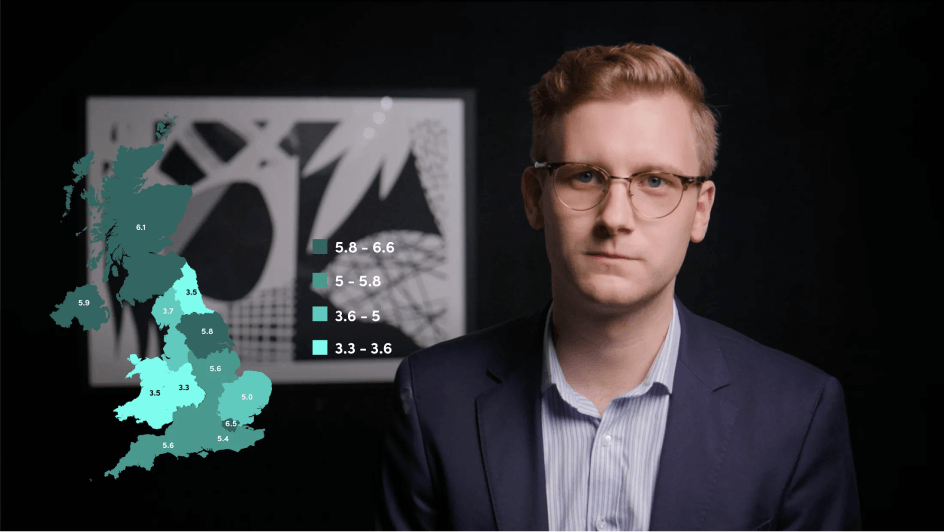
Global Initiatives to Enhance Supply Chain Sustainability

Kate Larsen
20 years: Human Rights and Supply Chains
We’ve seen examples of supply chain abuse and explored how this problem has been allowed to proliferate. Now we move onto solutions. In this video, Kate outlines global principles and national legislation that have been passed on supply chain transparency and discusses how successful these have been in practice. She also explores how the industry is responding, from pushing the EU for more effective legislation to joining global standards guidance.

We’ve seen examples of supply chain abuse and explored how this problem has been allowed to proliferate. Now we move onto solutions. In this video, Kate outlines global principles and national legislation that have been passed on supply chain transparency and discusses how successful these have been in practice. She also explores how the industry is responding, from pushing the EU for more effective legislation to joining global standards guidance.
Subscribe to watch
Access this and all of the content on our platform by signing up for a 7-day free trial.

Global Initiatives to Enhance Supply Chain Sustainability
13 mins 43 secs
Key learning objectives:
Identify legislation on supply chain transparency
Understand the efficacy of these laws and principles
Learn how the industry is responding to supply chain abuse
Overview:
Conflict minerals (such as tin, tungsten, tantalum and gold) used by tech, auto and other hardware and metal goods making companies were being purchased from supply chains going back to conflicts in countries such as the Democratic Republic of the Congo. In January 2012, the California Transparency in Supply Chains Act mandated that businesses over a certain size and operating in California publish a statement on their website detailing their efforts to eradicate slavery and human trafficking. The UK Modern Slavery Act Transparency in Supply Chains clause requires disclosures by companies with a UK registered business and over £36 million in global turnover. This law has driven thousands of companies to look at whether modern slavery might exist in their global supply chains.
Subscribe to watch
Access this and all of the content on our platform by signing up for a 7-day free trial.
What is the Dodd-Frank Wall Street Reform and Consumer Protection Act?
In 2010, the US Congress passed legislation which the Securities and Exchange Commission explains “directs the Commission to issue rules requiring certain companies to disclose their use of conflict minerals if those minerals are “necessary to the functionality or production of a product” manufactured by those companies”.
The Dodd-Frank Act drove attention to the issue of conflict minerals and caused some of the largest tech and auto brands at the top of the supply chain to start engaging in influencing the companies towards delivering more ethical working conditions.
What are the pillars of the UN Guiding Principles on Business and Human Rights (UNGPs)?
1. The State duty to protect human rights against abuse by third parties, including business, through appropriate policies, legislation, regulations and adjudication;
2. The corporate responsibility to respect human rights, meaning to act with due diligence to avoid infringing on the rights of others and address adverse impacts with which they are involved; and
3. The need for greater access to effective remedy, both judicial and non-judicial, for victims of business-related human rights abuse.
What is the California Transparency in Supply Chains Act (CTSCA)?
The California Transparency in Supply Chains Act (Senate Bill 657) mandated that businesses over a certain size and operating in California should publish a statement on their website detailing their efforts to eradicate slavery and human trafficking from their direct supply chain. However, there is no requirement to state for the company to update on their work, which limits the impact of requests for transparency.
What is the the Modern Slavery Act (MSA) Transparency in Supply Chains Provision?
The UK Modern Slavery Act Transparency in Supply Chains clause requires disclosures by companies with a UK registered business and over £36 million in global turnover. This law has driven thousands of companies to look at whether modern slavery risk might exist in their global supply chains. However, whilst the UK Modern Slavery Act drove some change, it has been far from sufficient to reduce risk. The Act is deemed by many stakeholders to be insufficient given that UK government review notes “It will be for consumers, investors and Non-Governmental Organisations to engage and/or apply pressure where they believe a business has not taken sufficient steps”. Therefore, companies are more at risk of reputational damage than legal penalties.
What laws have been passed in Europe?
1. In France, there is the Duty de Vigilance requiring public reporting on business Human Rights due diligence efforts by very large companies in France.
2. Under Switzerland’s new Business Human Rights due diligence law (Articles 964j-964l CO and the ODiTr) companies who are registered in Switzerland must report on their supply chain human rights due diligence management system, policies, traceability efforts to identify, assess and minimize risks of adverse effects for workers when they release ores or metals containing tin, tantalum, tungsten or gold from conflict areas, or offer goods or services for which child labor is suspected.
3. The Norwegian Government passed the law (Proposition 150 L) on business supply chain transparency for due diligence on fundamental human rights and decent work.
4. The German business human rights due diligence in supply chains law passed late 2021 and is expected to come into effect in 2023.
5. The Netherlands announced plans to introduce mandatory human rights and environmental due diligence (HREDD) law.
6. Recommendations were made to the European Commission for an EU Mandatory Human Rights Due Diligence Directive towards encouraging companies to take action to ensure human rights and reduce environmental impacts in their supply chains.
How effective is this legislation?
These laws encourage important steps towards stamping out modern slavery and improving parts of supply chains where exploitation is likely to occur. However, they are not without flaws. Organisations have pointed out that while mandatory reporting and statement registers are vital tools for consumers, NGOs and investors, these laws were not addressing the root causes of exploitation - such as poverty, limited labour protection and border controls. Moreover, these laws can create a system that focuses on reporting rather than genuine effective action that can improve the lives of workers.
With limited legal recourse from national governments, it leaves the burden of accountability to consumers, NGOs and the media. Therefore, emerging law calls for legal liability for businesses to take mandatory human rights due diligence steps especially regarding social and environmental issues in their global supply chains.
Subscribe to watch
Access this and all of the content on our platform by signing up for a 7-day free trial.

Kate Larsen
There are no available Videos from "Kate Larsen"


























